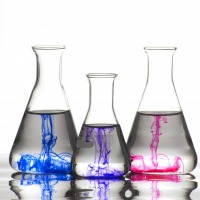
Soap is an excellent cleaner because it acts as an emulsifying agent. Soap consists of molecules of 2 types which are opposites: one is water soluble and the other is water repellent.
Soap and water are required for the cleaning process. The history of soapmaking shows us that water and soap have been working together since the start.
How soap works
Your hands are dirty and need cleaning. You place your hands in water to wash them, the water will remove a good part of the dirt because most of the dirt is water soluble, The dirt mixes well with the water and is removed from your hands.
There are other molecules that are not water soluble like oil and grease. These molecules will stick to your skin. The soap molecules that are water repellent attach to grease, oil, etc which then float away in the water.
Soap can sometimes do too good of a job. Good body oils that your skin needs can also become attached to soap molecules and be washed away leaving your skin clean but dry and possibly irritated. Natural soap can help prevent this from happening by including natural oils that replace oils removed by cleaning.